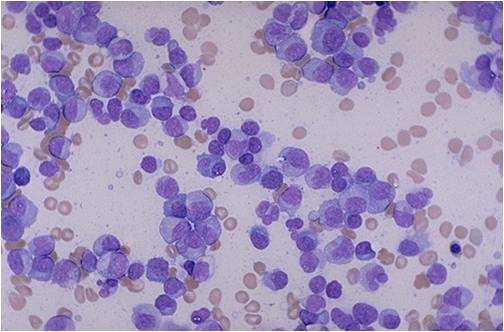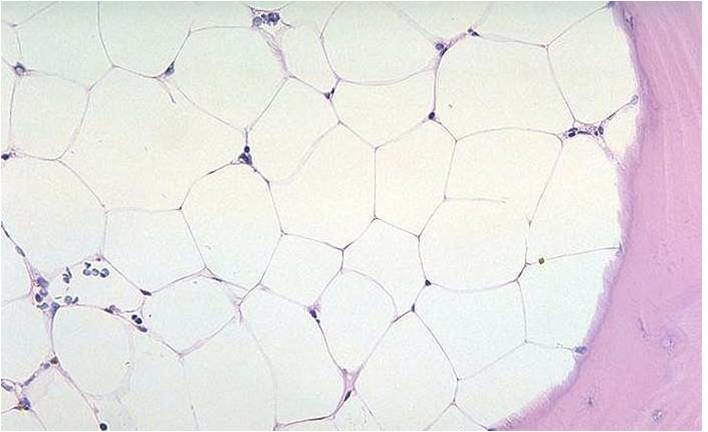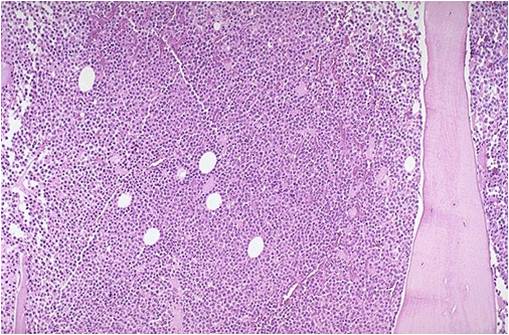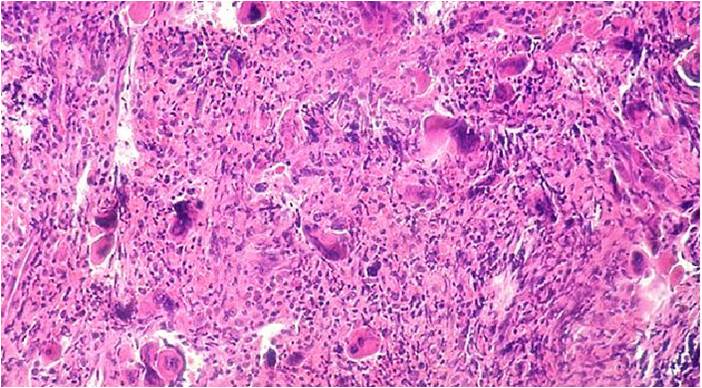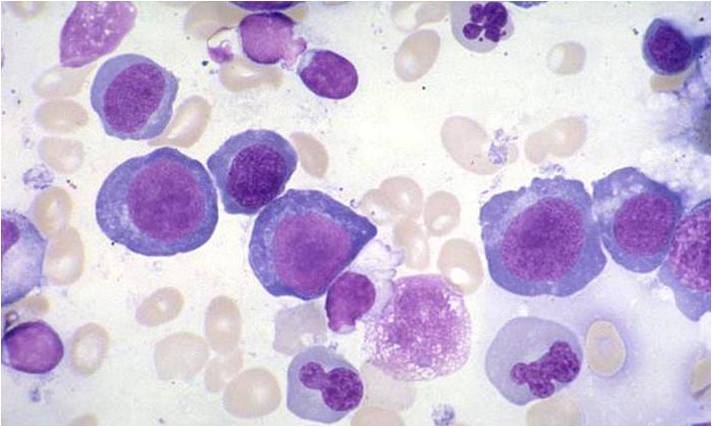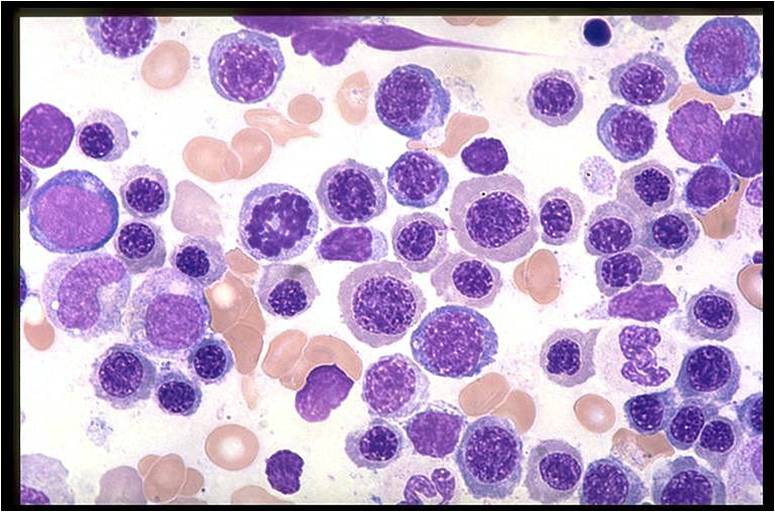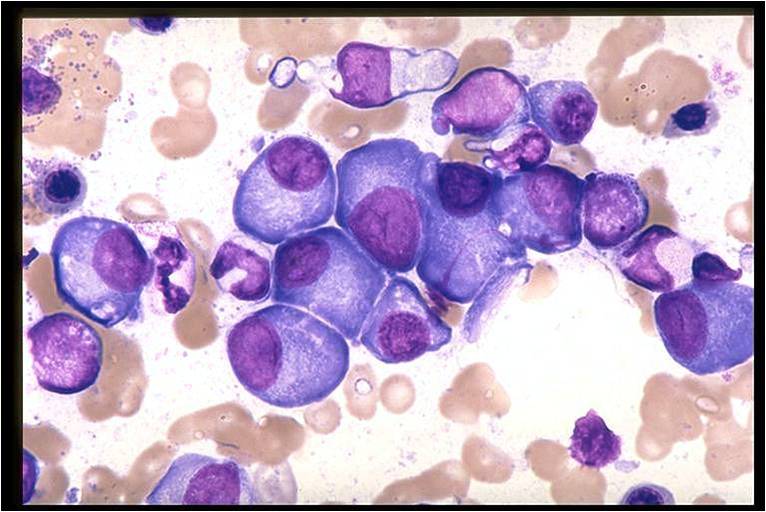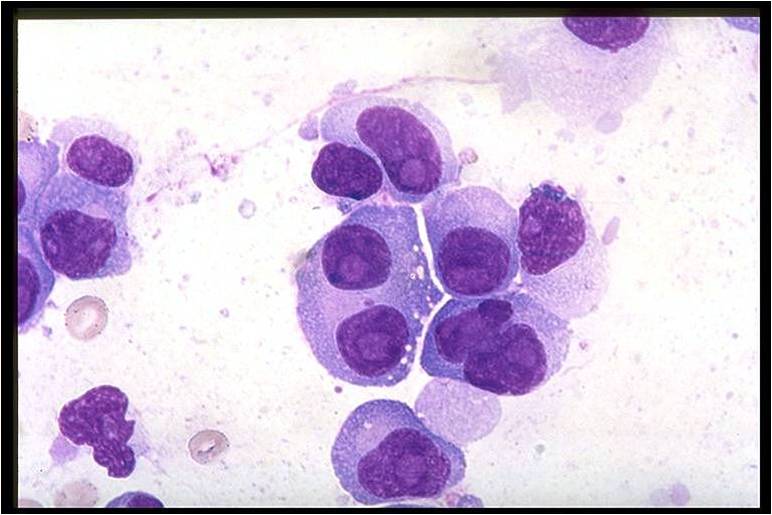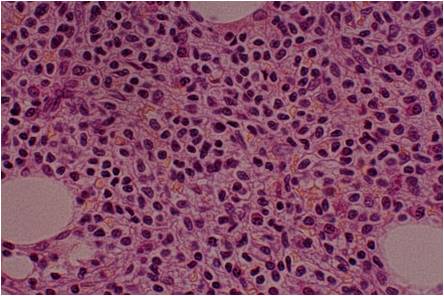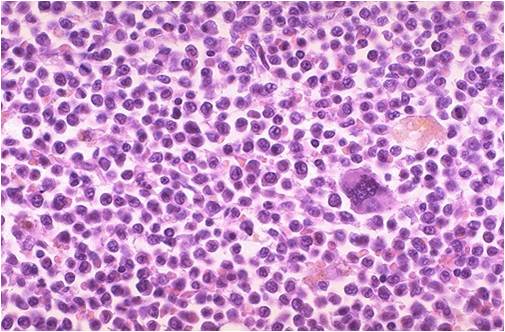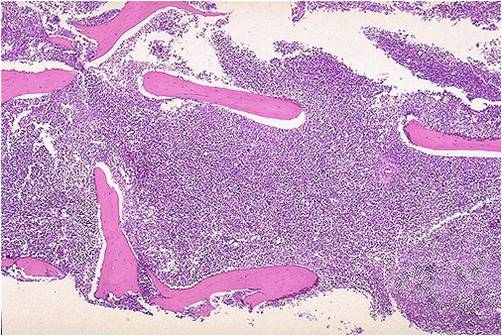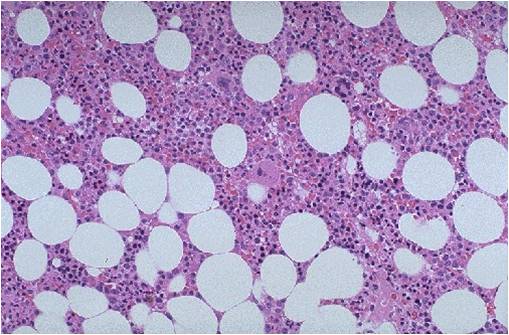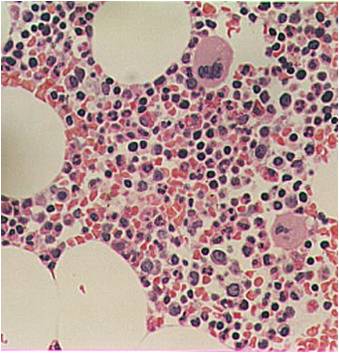Bone marrow examination
| Bone marrow examination | |
 | |
|---|---|
| Bone marrow aspiration |
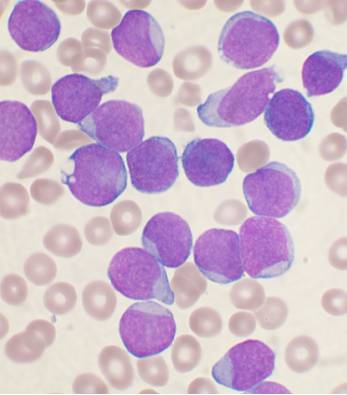
Editor-In-Chief: C. Michael Gibson, M.S., M.D. [1]
Overview
Bone marrow examination refers to the pathologic analysis of samples of bone marrow obtained by bone marrow biopsy (often called a trephine biopsy) and bone marrow aspiration. Bone marrow examination is used in the diagnosis of a number of conditions, including leukemia, multiple myeloma, anemia, and pancytopenia. The bone marrow produces the cellular elements of the blood, including platelets, red blood cells and white blood cells. While much information can be gleaned by testing the blood itself (drawn from a vein by phlebotomy), it is sometimes necessary to examine the source of the blood cells in the bone marrow to obtain more information on hematopoiesis; this is the role of bone marrow aspiration and biopsy.
Components of the procedure
Bone marrow samples can be obtained by aspiration and trephine biopsy. Sometimes, a bone marrow examination will include both an aspirate and a biopsy. The aspirate yields semi-liquid bone marrow, which can be examined by a pathologist under a light microscope as well as analyzed by flow cytometry, chromosome analysis, or polymerase chain reaction (PCR). Frequently, a trephine biopsy is also obtained, which yields a narrow, cylindrically shaped solid piece of bone marrow which is examined microscopically (sometimes with the aid of immunohistochemistry) for cellularity and infiltrative processes.
Site of procedure
Bone marrow aspiration and trephine biopsy are usually performed on the back of the hipbone, or posterior iliac crest. However, an aspirate can also be obtained from the sternum (breastbone). A trephine biopsy should never be performed on the sternum, however, due to the risk of injury to blood vessels, lungs or the heart.
How the test is performed
A bone marrow biopsy may be done in a health care provider's office or in a hospital. Informed consent for the procedure is typically required. The patient is asked to lie on his or her abdomen (prone position) or on his/her side (decubitus position). The skin is cleansed, and a local anesthetic such as lidocaine is injected to numb the area. Patients may also be pretreated with analgesics and/or anti-anxiety medications, although this is not a routine practice.
Typically, the aspirate is performed first. An aspirate needle is inserted through the skin until it abuts the bone. Then, with a twisting motion, the needle is advanced through the bony cortex (the hard outer layer of the bone) and into the marrow cavity. Once the needle is in the marrow cavity, a syringe is attached and used to aspirate ("suck out") liquid bone marrow.
Subsequently, the biopsy is performed if indicated. A different, larger trephine needle is inserted and anchored in the bony cortex. The needle is then advanced with a twisting motion and rotated to obtain a solid piece of bone marrow. This piece is then removed along with the needle. The entire procedure, once preparation is complete, typically takes 5-10 minutes.

After the procedure
After the procedure is complete, the patient is typically asked to lie flat for 10-15 minutes to provide pressure over the procedure site. After that, assuming there is no bleeding seen, the patient can get up and go about their normal activities. Paracetamol (acetaminophen) or other simple analgesics can be used to ease mild soreness, which is common for 12-24 hours after the procedure. Any worsening pain, redness, fever, bleeding or swelling may suggest a complication.
Contraindications
There are few contraindications to bone marrow examination. The only absolute reason to avoid performing a bone marrow examination is the presence of a severe bleeding disorder which may lead to serious bleeding after the procedure. If there is a skin or soft tissue infection over the hip, a different site should be chosen for bone marrow examination. Bone marrow aspiration and biopsy can be safely performed even in the setting of extreme thrombocytopenia (low platelet count).
Complications
While mild soreness lasting 12-24 hours is common after a bone marrow examination, serious complications are extremely rare. In a large review, an estimated 55,000 bone marrow examinations were performed, with 26 serious adverse events (0.05%), including one fatality.[1] The same author collected data on over 19,000 bone marrow examinations performed in the United Kingdom in 2003, and found 16 adverse events (0.08% of total procedures), the most common of which was bleeding. In this report, complications, while rare, were serious in individual cases.[2]
Additional Images
(Images shown below are courtesy of Melih Aktan MD, Istanbul Medical Faculty - Turkey, and Kyoto University - Japan, and Hospital Universitario La Fe Servicio Hematologia)
-
Bone marrow aspiration in multiple myeloma
-
Bone marrow biopsia in aplastic anemia
-
Bone marrow biopsy in multiple myeloma
-
Bone marrow in idiopathic myelofibrosis
-
Bone marrow in megaloblastic anemia
-
Bone marrow in megaloblastic anemia
-
Bone marrow in multiple myeloma
-
Bone marrow in multiple myeloma
-
Hairy cell leukemia findings in bone marrow examination
Bone marrow: Metastatic Adenocarcinoma
{{#ev:youtube|nuPvQ8QCQOs}}
